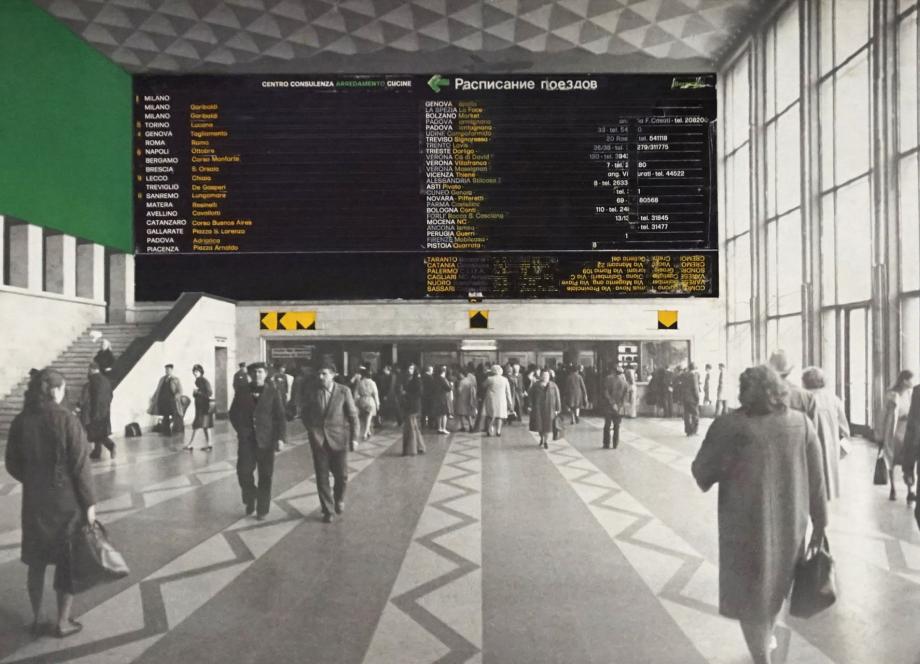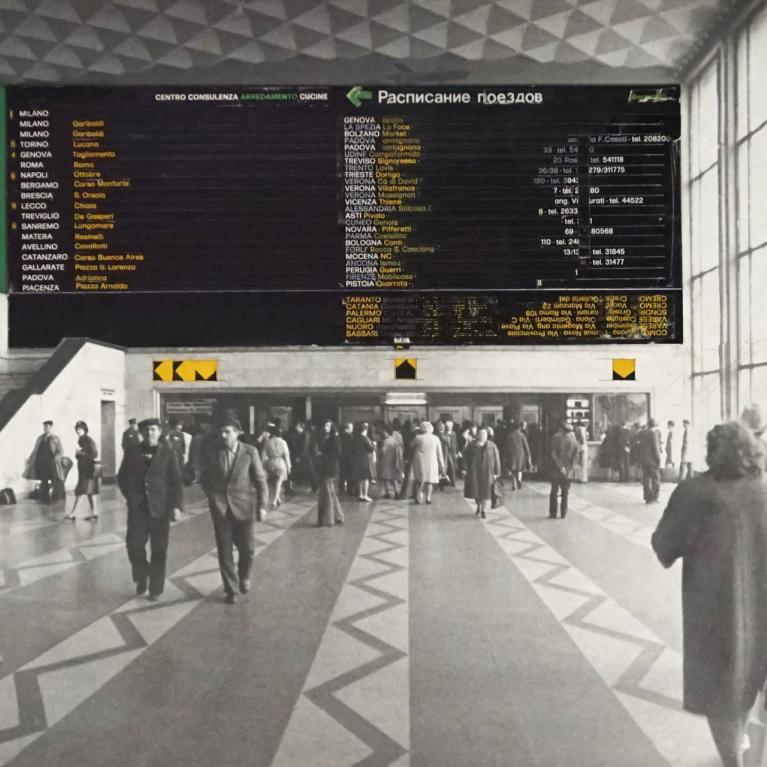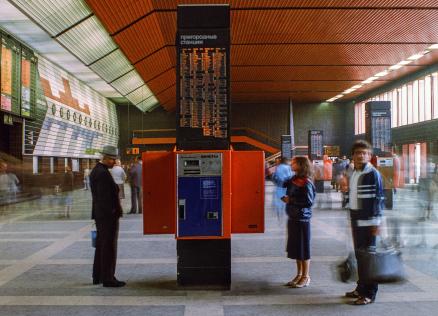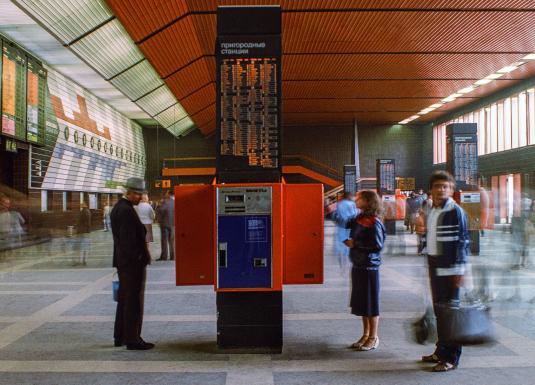From 18 October 2024 to 26 January 2025, the Museum of Decorative Arts and Design in Riga (Skārņu iela 10) hosts the first retrospective exhibition of the renowned Latvian designer and environmental artist Jānis Krievs, The Bygone Future, that multifacetedly presents his performance in design, kinetic, environmental, and interior art.
18 October 2024 – 26 January 2025
Museum of Decorative Arts and Design /
Great Hall
Skārņu iela 10, Riga
Media tour of exhibition on 16 October 2024 at 12.00
Registration of participants: 11.30–12.00
The exhibition invites visitors to immerse themselves in the atmosphere of the 1970s–80s through the creative lens of one designer. Jānis Krievs (1942–2016) was one of the most prominent Latvian graphic, environmental, and interior designers, as well as a representative of kinetic art. Author’s creative legacy holds a special and distinguished place in the history of Latvian design, with most of his work preserved in the collection of the Museum of Decorative Arts and Design.
Jānis Krievs was an innovator in several artistic fields, beginning from painting, which he studied, to interior projects, and explorations in kinetic and proto-digital art. The paradox of Jānis Krievs’ oeuvre is that his most active creative period took place when the Soviet regime lost it’s authority – ideologists called it the time of ‘advanced socialism’, later dubbed stagnation. However, Jānis Krievs’ imagination had nothing to do with the politically stifling atmosphere and economic backwardness – he was working for the future, seeing it as westernized, beautifully modern and technologically advanced.
Strangely enough, it was the decaying ambitions of the regime of the authorities to ‘catch up with and overtake capitalism’ that enabled the artist, who would rather have belonged to the ranks of dissidents, to realize daring, futuristic ideas, the grandest of which was the reconstruction of the interiors of Riga Central Railway Station. Jānis Krievs is characterized by a complex, synthetic approach to spatial solutions – he himself emphasized that he was creating environments rather than decorative objects or interiors: “Instead of the old stereotype of ‘design art’ comes ENVIRONMENTAL DESIGN. It is a complex, social process!” he wrote. Jānis Krievs’ ideas were ahead of their time and were as if created for people of the future. Another paradox is that the real course of history was cruel to the already implemented projects, and almost all of them were destroyed.
Soviet period design is an understudied and under-publicized cultural asset in Latvia, especially the heritage of the 1970s and 1980s, which has mostly been lost, transformed, and not known to the younger generation. The artist’s creative work deserves to be on a par with Rihards Zariņš, Ansis Cīrulis, Jūlijs Madernieks, and other prewar design classics, as well as his post-war contemporaries – avant-garde architect Marta Staņa, design and kinetic art theorist and practitioner Valdis Celms, thus broadening public perceptions of the golden fund of Latvian design.
The illogy enclosed in the exhibition’s title The Bygone Future is ambivalent – it combines Jānis Krievs’ futuristic, forward-orientated creativity with the actual situation that his most significant realized objects – the environmental design of Riga Central Railway Station and the kinetic solution of the station clock, the kinetic wall of the Daugavpils Palace of Culture stage, the kinetic object and stage relief of the Railway Workers’ Culture Palace, the foyer interior of the Riga Sports Palace, etc. – have not survived to the present day. Jānis Krievs is a protagonist of this era, who reconciled the contradictions of the time: on the one hand, the resources available in a planned economy and the authorities’ interest in investing them in the creation of new public spaces (especially related to the 1980 Moscow Olympic Games), and on the other, the orientation of Latvian artists towards Western design models, progressive ideas and innovation.
“The exhibition will probably evoke memories to the older generation, while for the middle and younger generations, it will be a complete discovery,” promises Vilnis Vējš, curator of the project. In order to give an expanded view of the scale of Jānis Krievs’ talent and his impact of the techniques used to organize space, the exhibition features more than 100 original works of the artist – not only drawings and sketches, but also their creative interpretation in real dimensions (by Mārtiņš Ratniks). Moreover, there is an opportunity to ‘walk through’ the interior of the railway station in an interactive digital reconstruction. The exhibition highlights the most important qualities of the author’s oeuvre: his vision of the future, sense of presence, and complex approach.
For the first time, large-scale interior decorations from the former retirement home Dzintars (popularly known as Astoņi luksi) in Jūrmala, which in the past was only accessible to the Soviet elite, are shown to a wider audience. Their relocation to the museum and restoration were made possible by their current owner Real Estate developer Pillar. The design of the Riga Central Railway Station’s waiting room benches, created under the direction of Jānis Krievs and designed by Aivars Bērziņš, is featured in the exhibition with the support of SJSC Latvijas Dzelzceļš. The exposition also combines selected works from the Zuzāns Collection and the National Library of Latvia, as well as film footage from the National Archives of Latvia.
The project is realized thanks to the support of the State Culture Capital Foundation’s target programme Nationally Significant Cultural Events.

Exhibition curator:
Vilnis Vējš
Exhibition Curator /
Museum of Decorative Arts and Design /
Latvian National Museum of Art
Ph: (+371) 65 802 006
E:
Exhibition scenography and graphic design:
Mārtiņš Ratniks
Immersive design:
Kaspars Gobiņš
Exhibition coordination and communication:
Inese Baranovska
Head of the Museum of Decorative Arts and Design /
Latvian National Museum of Art
Ph: (+371) 67 830 900
E:
Ieva Zvejniece
Curator of Design and Decorative Woodworking Art Collection /
Museum of Decorative Arts and Design /
Latvian National Museum of Art
Līga Brice
Senior Specialist /
Museum of Decorative Arts and Design /
Latvian National Museum of Art
Līva Kubulniece
Communication Specialist /
Museum of Decorative Arts and Design /
Latvian National Museum of Art
Ph: (+371) 28 381 129
E:
Education and event programme:
Kortnija Māra Gurtlava
Curator of Education /
Museum of Decorative Arts and Design /
Latvian National Museum of Art
Kristīne Šica
Curator of Education /
Museum of Decorative Arts and Design /
Latvian National Museum of Art



